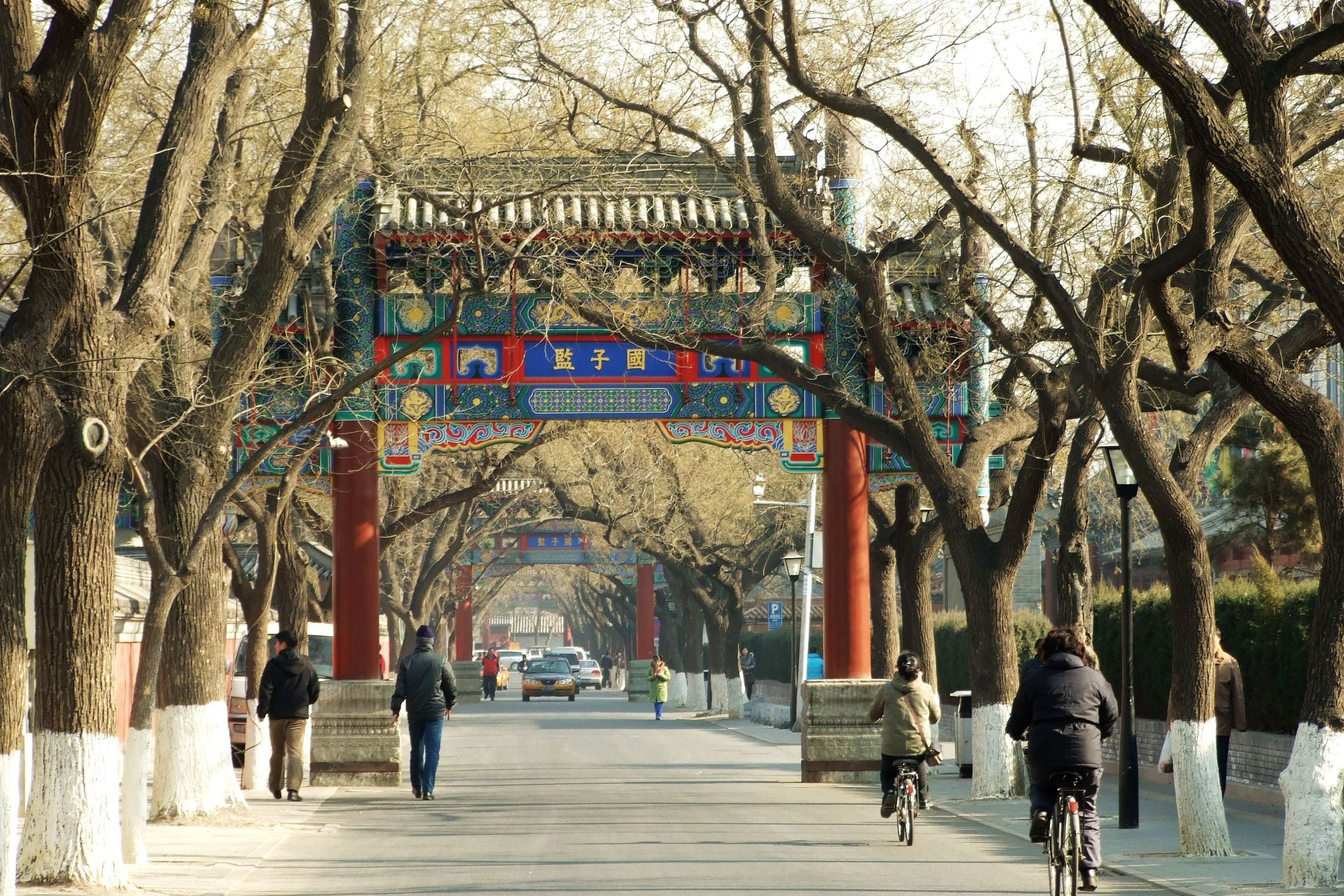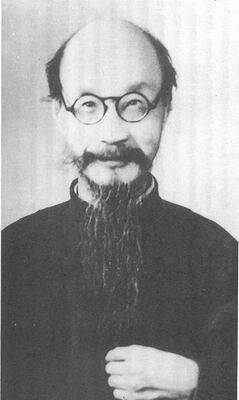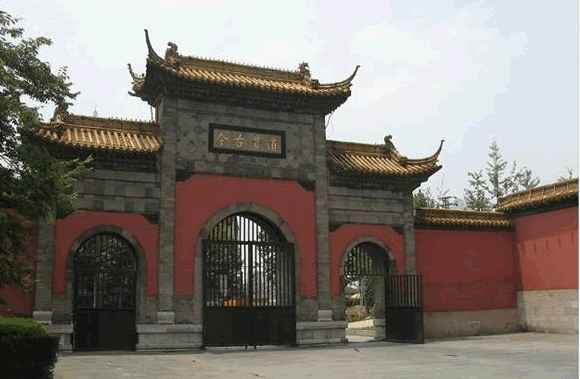|
Nanjing Library
Nanjing Library () is the third largest library in China with over 10 million items. It houses important scientific, cultural and arts literature relating to Jiangsu province and other national historical records such as ancient Chinese and foreign publications. As located in the ancient capital Nanjing, the library contains 1.6 million ancient books and 100,000 volumes of books, documents and manuscripts (including Buddhist scriptures) dating from the Tang dynasty to the Ming dynasty. History Nanjing Library was established in 1907 as Jiangnan Library. Over time, the library has undergone several organisational changes. The library endured through Qing dynasty, Republic of China, and the People's Republic of China. It witnessed greatest changes that took place in modern China and by itself gives clear records to the one-century history of modern China. Resources of books: Most of books were collected in 1949 (The year of establishment of People's Republic of China), including bo ... [...More Info...] [...Related Items...] OR: [Wikipedia] [Google] [Baidu] |
China
China, officially the People's Republic of China (PRC), is a country in East Asia. It is the world's List of countries and dependencies by population, most populous country, with a Population of China, population exceeding 1.4 billion, slightly ahead of India. China spans the equivalent of five time zones and Borders of China, borders fourteen countries by land, the List of countries and territories by land borders, most of any country in the world, tied with Russia. Covering an area of approximately , it is the world's third List of countries and dependencies by area, largest country by total land area. The country consists of 22 provinces of China, provinces, five autonomous regions of China, autonomous regions, four direct-administered municipalities of China, municipalities, and two special administrative regions of China, Special Administrative Regions (Hong Kong and Macau). The national capital is Beijing, and the List of cities in China by population, most populous cit ... [...More Info...] [...Related Items...] OR: [Wikipedia] [Google] [Baidu] |
National Central Library
The National Central Library (NCL; ) is the national library of the Republic of China (Taiwan), which is located at No. 20, Zhongshan S. Rd., Zhongzheng District, Taipei City 10001, Taiwan. It will soon have a subsidiary called Southern Branch of the National Central Library & National Repository Library. Mission The National Central Library is the sole national library of Taiwan. Its mission is to acquire, catalog, and preserve national publications for government, research and general public use. The Rare Books Collection is one of the leading collections of Chinese antique books and manuscripts in the world. The library also assists research, sponsors educational activities, promotes librarianship, carries out international exchange activities, and strengthens cooperation between domestic and foreign libraries. The library also supports Sinological research through the affiliated Center for Chinese Studies (CCS). As a research library, the NCL encourages staff members to ... [...More Info...] [...Related Items...] OR: [Wikipedia] [Google] [Baidu] |
Rare Book Preservation Society
The Rare Book Preservation Society (文献保存同志会) was founded in 1940 by Zheng Zhenduo (郑振铎), Zhang Shouyong (张寿镛), He Bingsong (何炳松), Zhang Yuanji (张元济), and Zhang Fengju (张凤举) for the purpose of secretly acquiring and preserving rare books and manuscripts in the Shanghai Jiangnan region. These cultural assets have been accumulated by a number of famous private libraries some over 1,000 years. They faced Japanese looting and forced sale under duress. In less than two years, the Society succeeded in saving over 130,000 volumes in the lands controlled by the Japanese. One hundred thirty crates were sent to Hong Kong (then a British colony) for safekeeping. Despite their best efforts, the entire collection was looted anyway when the Japanese later overran Hong Kong. Fortunately, after WWII and the Japanese surrender, Zhang Fengju 张凤举 (fluent in French, English and Japanese) was sent to Japan in April 1946 and recovered the collection af ... [...More Info...] [...Related Items...] OR: [Wikipedia] [Google] [Baidu] |
Republic Of China
Taiwan, officially the Republic of China (ROC), is a country in East Asia, at the junction of the East and South China Seas in the northwestern Pacific Ocean, with the People's Republic of China (PRC) to the northwest, Japan to the northeast, and the Philippines to the south. The territories controlled by the ROC consist of 168 islands, with a combined area of . The main island of Taiwan, also known as ''Formosa'', has an area of , with mountain ranges dominating the eastern two-thirds and plains in the western third, where its highly urbanised population is concentrated. The capital, Taipei, forms along with New Taipei City and Keelung the largest metropolitan area of Taiwan. Other major cities include Taoyuan, Taichung, Tainan, and Kaohsiung. With around 23.9 million inhabitants, Taiwan is among the most densely populated countries in the world. Taiwan has been settled for at least 25,000 years. Ancestors of Taiwanese indigenous peoples settled the island aroun ... [...More Info...] [...Related Items...] OR: [Wikipedia] [Google] [Baidu] |
Taiwan
Taiwan, officially the Republic of China (ROC), is a country in East Asia, at the junction of the East and South China Seas in the northwestern Pacific Ocean, with the People's Republic of China (PRC) to the northwest, Japan to the northeast, and the Philippines to the south. The territories controlled by the ROC consist of 168 islands, with a combined area of . The main island of Taiwan, also known as ''Formosa'', has an area of , with mountain ranges dominating the eastern two-thirds and plains in the western third, where its highly urbanised population is concentrated. The capital, Taipei, forms along with New Taipei City and Keelung the largest metropolitan area of Taiwan. Other major cities include Taoyuan, Taichung, Tainan, and Kaohsiung. With around 23.9 million inhabitants, Taiwan is among the most densely populated countries in the world. Taiwan has been settled for at least 25,000 years. Ancestors of Taiwanese indigenous peoples settled the island a ... [...More Info...] [...Related Items...] OR: [Wikipedia] [Google] [Baidu] |
Chinese Civil War
The Chinese Civil War was fought between the Kuomintang-led government of the Republic of China and forces of the Chinese Communist Party, continuing intermittently since 1 August 1927 until 7 December 1949 with a Communist victory on mainland China. The war is generally divided into two phases with an interlude: from August 1927 to 1937, the KMT-CCP Alliance collapsed during the Northern Expedition, and the Nationalists controlled most of China. From 1937 to 1945, hostilities were mostly put on hold as the Second United Front fought the Japanese invasion of China with eventual help from the Allies of World War II, but even then co-operation between the KMT and CCP was minimal and armed clashes between them were common. Exacerbating the divisions within China further was that a puppet government, sponsored by Japan and nominally led by Wang Jingwei, was set up to nominally govern the parts of China under Japanese occupation. The civil war resumed as soon as it becam ... [...More Info...] [...Related Items...] OR: [Wikipedia] [Google] [Baidu] |
Second Sino-Japanese War
The Second Sino-Japanese War (1937–1945) or War of Resistance (Chinese term) was a military conflict that was primarily waged between the Republic of China and the Empire of Japan. The war made up the Chinese theater of the wider Pacific Theater of the Second World War. The beginning of the war is conventionally dated to the Marco Polo Bridge Incident on 7 July 1937, when a dispute between Japanese and Chinese troops in Peking escalated into a full-scale invasion. Some Chinese historians believe that the Japanese invasion of Manchuria on 18 September 1931 marks the start of the war. This full-scale war between the Chinese and the Empire of Japan is often regarded as the beginning of World War II in Asia. China fought Japan with aid from Nazi Germany, the Soviet Union, United Kingdom and the United States. After the Japanese attacks on Malaya and Pearl Harbor in 1941, the war merged with other conflicts which are generally categorized under those conflicts of World War II ... [...More Info...] [...Related Items...] OR: [Wikipedia] [Google] [Baidu] |
Chengxian Street
Guozijian Street (Chinese: 国子监街; Pinyin: Guózǐjiàn Jiē), formerly known as Chengxian Street (Chinese: 成贤街; Pinyin: Chéngxián Jiē), is a street in Dongcheng District, Beijing. It is listed as an important historical site. The Beijing Guozijian (Imperial College), dating to 1306, and a Temple of Confucius, built in 1302, are located in this street. The Yonghe Temple The Yonghe Temple (, "Palace of Peace and Harmony"), also known as the Yonghe Lamasery, or popularly as the Lama Temple, is a temple and monastery of the Gelug school of Tibetan Buddhism located on 12 Yonghegong Street, Dongcheng District, Beij ... is located next to its east entrance. References {{coord, 39.9455, N, 116.4123, E, source:wikidata, display=title Dongcheng District, Beijing Streets in Beijing ... [...More Info...] [...Related Items...] OR: [Wikipedia] [Google] [Baidu] |
Ministry Of Education Of The People's Republic Of China
The Ministry of Education of the People's Republic of China is a cabinet-level department under the State Council of the People's Republic of China, State Council responsible for basic education, vocational education, higher education, and other educational affairs across the country. The Ministry of Education also acts as a funder for most of the national public universities and colleges in China. The ministry also accredits Tertiary education, tertiary institutions, curriculum, and Teacher, school teachers. It is headquartered in Xicheng District, Xicheng, Beijing. The Ministry of Education was established in 1949 as the Ministry of Education of the Central People's Government, and was renamed the State Education Commission of the People's Republic of China from 1985 to 1998. Its current title was assigned during the restructuring of the State Council in 1998. History The Ministry of Education was one of the first Government Administration Council departments created when ... [...More Info...] [...Related Items...] OR: [Wikipedia] [Google] [Baidu] |
Liu Yizheng
Liu Yizheng (; 1880–1956) was a Chinese historian, calligrapher, librarian, cultural scholar, educator, and academic leader. He is known for his personal charisma, spirit and eruditeness. In modern Chinese academic field, it is said that the number of famous experts in various fields including in literature, history, geography, philosophy and even natural science he educated and enlighted was the most. Liu Yizheng and Wang Bohang were honorifically called Nanyong Double Pillars (Two pillars of Nanjing University) during early period of Republic of China. Biography Early life under the Qing dynasty Born and educated under the Qing dynasty (1644–1912), Liu passed the first level of the imperial civil service examination a few years before its abolition in 1905.Tze-ki Hon, "Educating the Citizens: Visions of China in Late Qing Historical Textbooks," in ''The Politics of Historical Production in Late Qing and Republican China'', edited by Tze-ki Hon and Robert J. Culp (Leiden: ... [...More Info...] [...Related Items...] OR: [Wikipedia] [Google] [Baidu] |
Nanjing University
Nanjing University (NJU; ) is a national public research university in Nanjing, Jiangsu. It is a member of C9 League and a Class A Double First Class University designated by the Chinese central government. NJU has two main campuses: the Xianlin campus in the northeast of Nanjing, and the Gulou campus in the city center of Nanjing. Established in 1902 as Sanjiang Normal School, Nanjing University underwent a number of name changes, such as Nanjing Higher Normal School, National Southeastern University and National Central University, until it was renamed Nanjing University in 1950. It merged with the University of Nanking in 1952. NJU is perennially ranked one of the best research universities in China, and one of the most selective universities in the nation. As of 2022, Nanjing University ranked 7th in China and 95th globally by Times Higher Education World University Rankings. Regarding scientific research output, the Nature Index Annual Table 2022 ranked Nanjing University ... [...More Info...] [...Related Items...] OR: [Wikipedia] [Google] [Baidu] |




.jpg)

